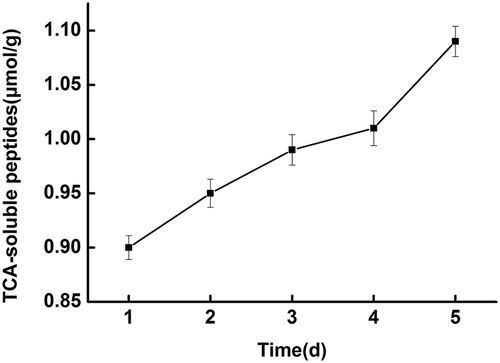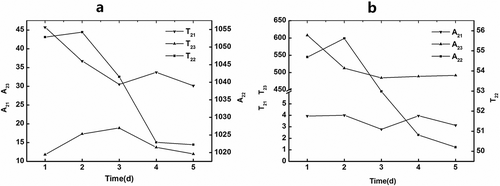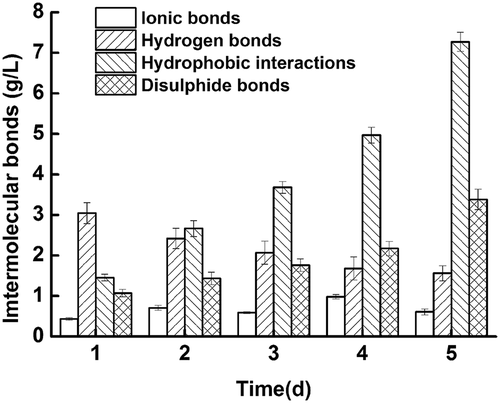Figures & data
Figure 1. Total volatile basic nitrogen (TVBN) (mg /100 g fish muscle) of fish during cold storage at 4°C.

Table 1. Texture changes in raw and cooked fish during cold storage at 4°C.
Figure 3. SDS-PAGE patterns of fish during cold storage at 4°C. Numbers designate the storage time (days). Marker: molecular weight marker.
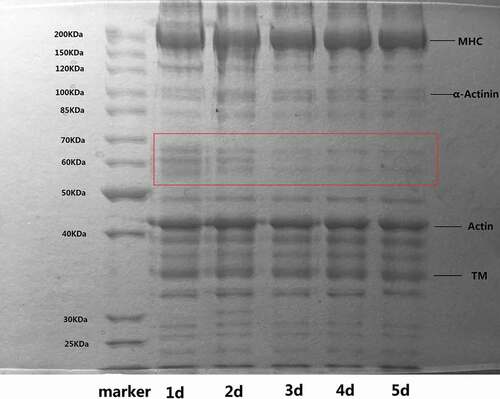
Table 2. Moisture content, cooking loss, and centrifugal loss of fish during cold storage at 4°C.
Figure 4. Typical NMR T2 curve of fish during cold storage at 4°C. P1, bound water; P2, immobilized water; P3, free water.
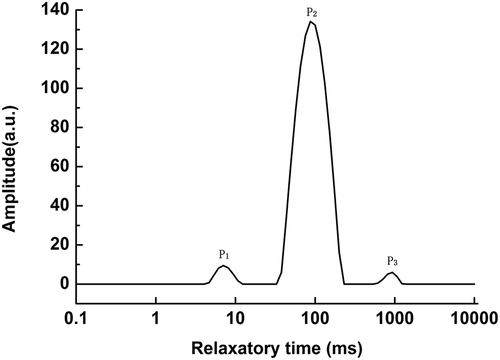
Table 3. PPMCCs of NMR (A21, A22, A23, T21, T22, T23) and texture (hardness, springiness, cohesiveness, gumminess, and chewiness).
Table 4. PPMCCs of immobilized water and intermolecular bonds (hydrophobic interactions and disulfide bonds).

